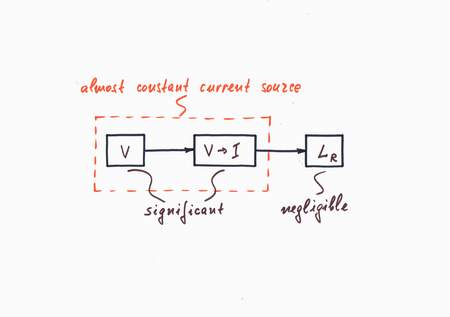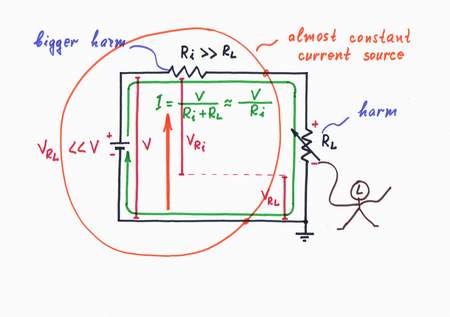<< prev story circuit-fantasia > circuit stories > understanding circuits > simple current source (real loaded) next story >>
What is the idea behind this circuit?
Simple Current Source (real loaded)
Idea: Depreciating the losses by significant additional losses and energy.

The simple current source becomes imperfect when a real load (e.g. having a varying ohmic resistance or voltage) is applied.
Observing the odd idea above, we add significant additional losses than the ones caused by the load and also increase the input voltage. As a result, the load's losses are depressed. Now, both the voltage source and the voltage-to-current converter define the output current predominantly.
Implementation: Increasing the resistance Ri and the voltage V.
We may see this idea in the beginning of any book on basic electricity where the resistance Ri and the voltage V are increased so that Ri >> RL and V >> VRL. As a result, an almost constant current I=V/Ri flows through the circuit.
If we continue increasing these quantities up to infinity, we will get the classic ideal current source. Only, this simple circuit has a big disadvantage - a whole lot of energy dissipates over the internal resistance Ri.
<< prev story circuit-fantasia > circuit stories > understanding circuits > simple current source (real loaded) next story >>

